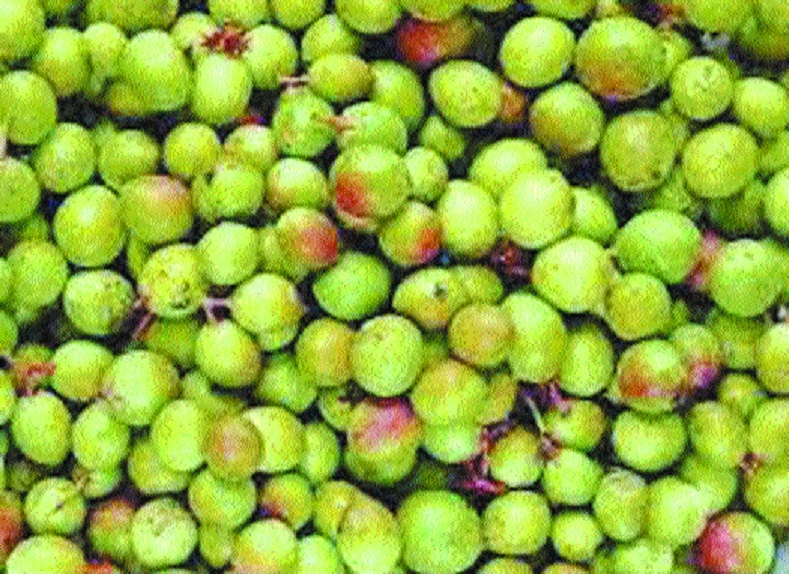Karavanda: A natural sugar stabiliser, protects liver
| Date :26-Sep-2019 |

By Rajendra Diwe :
Green, oblong, broad ovoid or round berries seen in market are known as Karavanda. Some fruits are pinkish white and turn red to dark purple when ripe. Botanically this plant is known as Carissa Carandas. It is found in forests, along the roadside and the mountains. The plant bears thorny bushes of reddish berry called as Karavanda which are like Goose Berries. The leaves of these trees are evergreen and the fruits grow in cluster of 3 to 10. The raw or green Karavanda are sour in taste while the ripened fruit is sweet and eaten as it is. The raw or green Karavanda are used to prepare pickles, sausages, jams and jellies etc. There are many names to this fruit.
They are Karavanda, Jangali Karavanda, Shobheche Karavanda etc., in forest areas. In Assam it is known as Korjatenga, Korja tenga, Karenja, karja tenga; in Bengal it is called as Koromcha; in English it is popular as Bengal-currants, Carandas-plum, Karanda, Christ thorn, Christ’s thorn, Jasmine flowered carrisa, Karaunda, black currants etc. In Hindi it is known as karaunda, garinga, gotho, karonda; in Kannada: Kauli hannu, karande kai, doddakaala, garchinikai, karinda; in Malayalam it is known as Kalachedi, Karakka, karanda, Klavu, karant, kalavu, karaka, karanta, karekkai, panimarda, susena, vanalaya, vanakshudra etc. In Marathi, it is famous as Karvanda, kaarandi, kali maina, boranda, boronda, karanda etc; in Oriya it is known as Sushena; in Sanskrit it is called as Avighna, karamarda, Karonda; in Tamil it is popular as Kalaaha, kila, Kilaakkaai, Killeekkaai, kala, Kalakkai, aintirikam, cenkala, karavinta, kilamaram, kilatti, perumkla, purungilamaram; in Telugu it is called as Peddakalavi, vakkai, kalay, kali-kai etc. The entire plant has medicinal values. Carissa carandas plants are used to cure various diseases such as asthma, skin disease, cough, cold and tuberculosis.
They usually are prepared as fresh juices rather than boiling water and decoction leaves and flowers of Carissa Carandas. Juice of the leaves of this plant plays an important role in treating many diseases. The fruit, flowers, leaves and other plant parts consists of copper, iron, Vitamin C, Manganese, and Potassium. It has a lengthy history in Indian folk medicine. Tribes in the Western Ghats use the fruit as a blood sugar stabiliser and as a guard against liver damage. The fruits are astringent (causing the contraction of skin cells and other body tissues), antiscorbutic (having the effect of preventing or curing scurvy) and also used as a remedy for biliousness (relating to an illness, caused by too much bile, that can cause vomiting). A leaf decoction is used against fever, diarrhoea, and ear ache. The roots serve as a stomachic, vermifuge (anti worms) and remedy for itches.
The roots are used as an insect repellent. Karavanda are rich in iron hence are beneficial for anaemic patients. The fruit bears Vitamin C nutrient which is best for growth and repair of tissues in the body. Analgesic attribute is essential in providing relief from Pain. Karavanda fruit has an Anthelmintic impact in the body which expels the Parasitic Worms. It is Antipyretic in nature which effectively reduces fever. It is a cardio tonic for the body. Thus, it regulates and optimises the Heart functions to avoid Heart Diseases. It possibly prevents the occurrence of inflammation within the body. Due to cytotoxic characteristics, it prevents the growth of cancer and tumor cells. Therefore, it is a beneficiary remedy for Cancer and Tumor patients.